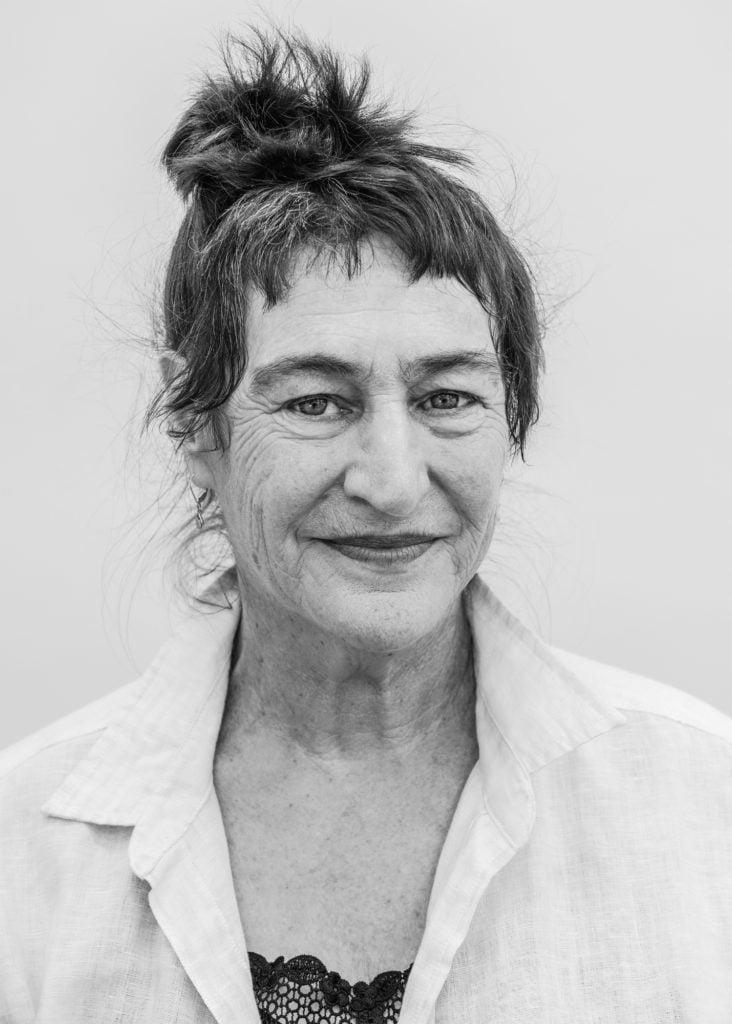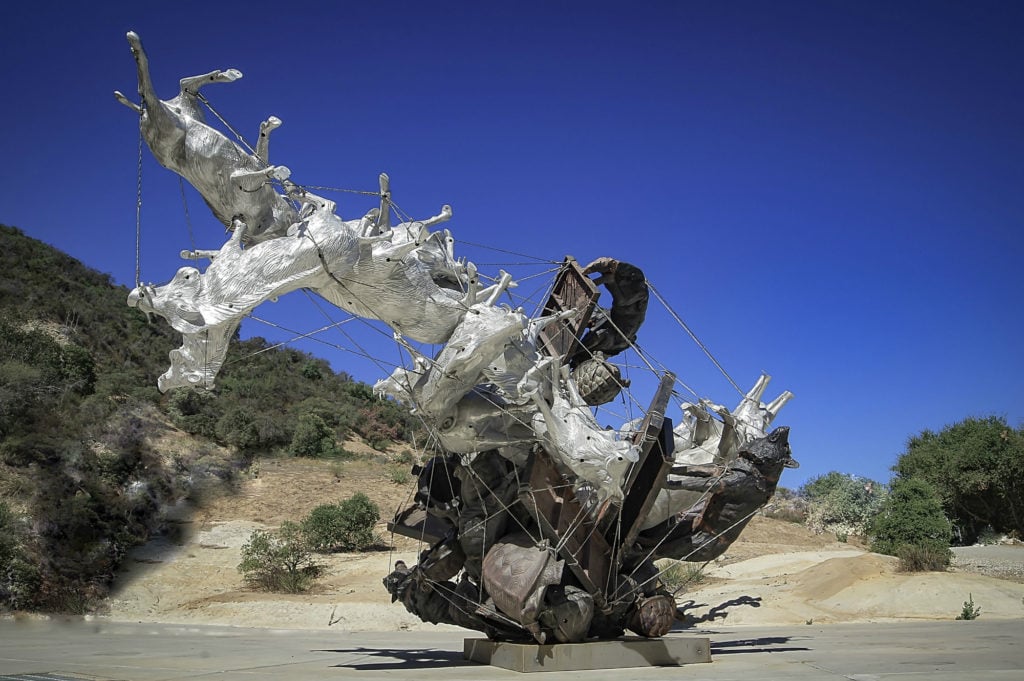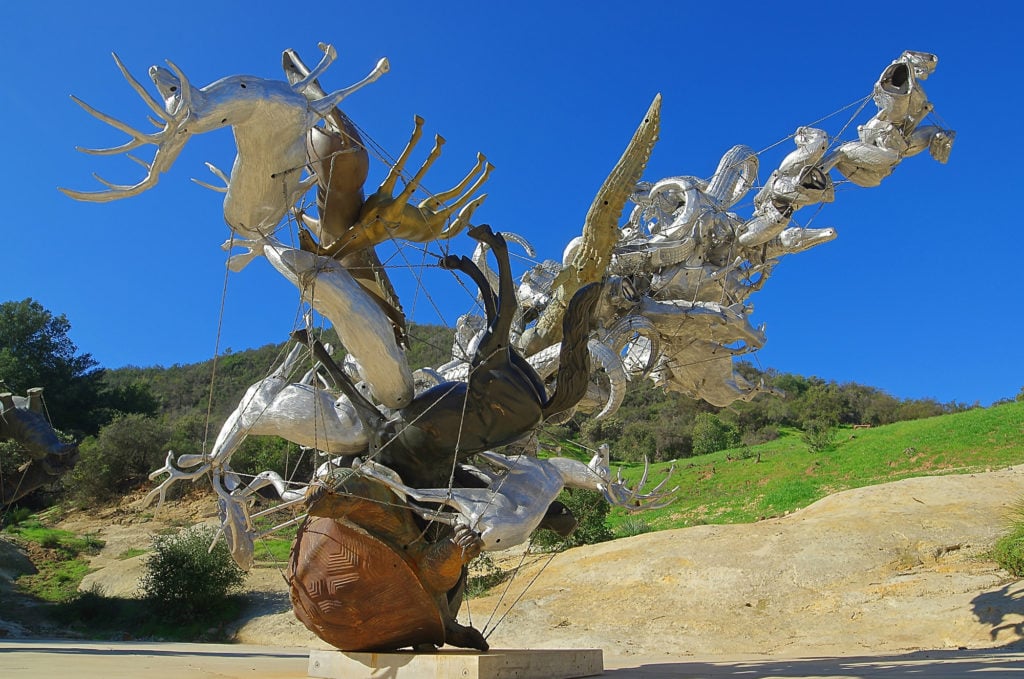Art & Exhibitions
Nancy Rubins Makes Her London Debut in the Heavyweight Division
The Los Angeles-based artist says that being a half an inch shorter than Richard Serra was never going to stop her from making her mark as a sculptor in metal.

The Los Angeles-based artist says that being a half an inch shorter than Richard Serra was never going to stop her from making her mark as a sculptor in metal.

Javier Pes

The American artist Nancy Rubins’s spectacular, large-scale sculptures are much-loved landmarks outside the Museum of Contemporary Art in Los Angeles and the Albright-Knox Art Gallery in Buffalo, New York. This spring, Rubins’s Monochrome II is due to become the latest permanent outdoor sculpture at the Crystal Bridges Museum of American Art in Bentonville, Arkansas. The French, too, admire her gravity-defying works made out of recycled materials, ranging from decommissioned aircraft parts and defunct playground equipment to old canoes. But the UK has had to wait to experience her work close-up. Until now. The artist will make her London debut at Gagosian Gallery’s cavernous Britannia Street space in a solo show featuring sculptures and drawings, which opens on Wednesday, February 7 (until 14 April).
Called “Diversifolia,” the show promises to be a memorable London debut for the Los Angeles-based artist. It will feature four large-scale works—the heaviest that she’s made so far—the parts of which filled 20 extra-tall shipping containers. “London is a sculpture town,” Rubins told artnet News. She was speaking mid-installation, taking a short break from putting together the sculpture with the aid of her veteran six-strong crew of technicians who have come with her from Southern California. They have been working together, on and off, since the early 1990s. “They keep saying, ‘We need a younger guy’,” Rubins joked. (There is one, but he is back in Topanga Canyon looking after her three dogs and the sprawling studio complex she built with her late husband, the sculptor Chris Burden.)

Nancy Rubins, Hog de la Ivy (2016–17), ©Nancy Rubins, courtesy Gagosian, photo by Joel Searles.
Instead of plane parts or old canoes, this time Rubins has constructed a series of monumental works from a menagerie of animal sculptures that could have strayed from a deranged garden-artworks fire sale. The show’s title “Diversifolia” refers to the variety of leaf shapes.
Works such as Hog de la Ivy (2016–17), are baroque arrangements of rusty metals pieces and shiny creatures that tower over the viewer, bound by tension cables, like a giant’s bouquet. Another work, this time a reptilian called Crocodylius Philodendrus (2016–17) is over four metres tall and more than five metres wide.
Rubins first saw the giraffes, storks, tortoises, crocodiles, wolves, and hogs—cast in iron, bronze, brass, and aluminum—in the yard of her go-to metal salvage supplier in Los Angeles. When he asked: “You want some pigs?” Rubins said “yeah!” She stressed that she is not interested in what they were originally made for or where. Some are intended as signs, she suspects, and a few hail from China. She thinks a giant turtle, which weighs 870 pounds, was intended as a fountain. But her real interest in the material is formal—and cosmic. “I think about where the metal has come from, like my earrings, the gold came from a star exploding,” she said. Similarly, she is fascinated by images taken by unmanned spacecraft deep in space.

Nancy Rubins, Crocodylius Philodendrus (2016–17), ©Nancy Rubins, courtesy Gagosian, photo by Joel Searles.
Meanwhile, back on earth, she helped break a few glass ceilings. Asked whether being a female artist based on the West Coast and working on a big scale presented obstacles after she graduated with an MFA from the University of California, Davis, in 1976, she deadpans: “Richard Serra is only half and inch taller than me, know what I mean? Why let it stop you?”
She showed the same can-do spirit when finding a space where she could work on monumental pieces, moving with Burden to Topanga Canyon in 1984. They lived in tents for the first few years. “It was an adventure,” she said, as if living off-grid was a cakewalk. “There is always a way to do what you need to do.”